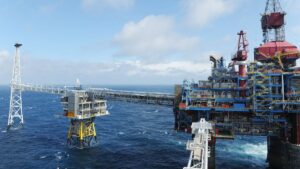The world’s primary production and processing industries – such as agriculture, forestry, and mining, along with fossil fuel generation and cement, steel and paper manufacturing – have unpriced natural capital costs totaling $7.3 trillion, the equivalent of 13 per cent of global economic output.
According to a new report released by the United Nations Environmental Program, none of the top 20 regional industry sectors with the biggest environmental impact would be profitable, let alone cover their cost of capital, if environmental impacts from as greenhouse gases, and land and water degradation were taken into account.
The findings in Natural Capital – the 100 top externalities of business – were compiled by Trucost on behalf of The Economics of Ecosystems and Biodiversity program sponsored by UNEP. This program is part of a global effort to try to bring value to natural capital, which is ignored by standard measurements such as GDP, which only recognises value to non-renewable and traded commodities such as fossil fuels and other minerals that somebody digs up and sells.
Traditional economic measurements ascribe no value at all to assets such as groundwater, biodiversity and pristine forests that provide “ecosystem” services – at least not until an event such as drought causes a crisis in water supply crises, food shortage or extreme volatility in energy and agricultural prices. The report cites the drought in the US and the two-day blackout in India as two examples. And by that time it is usually too late.
Indeed, the report says that the internalisation (or pricing) of natural capital costs has only occurred at the margin so far – with some limited, and underpriced valuations on carbon pollution, for instance. Yet, it says, the world is heading for a train crash in resource management, with 3 billion new middle class consumers anticipated by 2030, demand set to grow rapidly and supply to continue to shrink.
“The consequences in the form of health impacts and water scarcity will create tipping points for action by governments and societies,” it warns. “The cost to companies and investors will be significant.”
The findings in the latest report are quite stunning, and point to the rate and breadth of the uncosted environmental damage inflicted by certain industries.
The report notes, for instance, that average pre-tax profit margins for companies listed in the MSCI World Index before natural capital costs were found to range from 7 per cent for iron and steel manufacturing, to 19 per cent for crude petroleum and natural gas extraction. But after natural capital costs are included, the range slumps to negative 67 per cent for cement manufacturing to minus 1 per cent for crude oil petroleum and natural gas extraction.
But these aren’t the worst offenders. The five regional sectors with the biggest impact on natural capital were identified as coal-fired generation in eastern Asia and in north America, land use from cattle ranching in South America and Southern Asia, and water use in wheat farming in Southern Asia.
Together, their impact on natural capital was valued at more than $1.6 trillion, more than double the revenue that the sectors generated in the same year (2009). In the case of cattle ranching in South America, the natural capital costs outweighed revenue by a ratio of more than 20 to one.
The study identified the most significant costs came in the form of greenhouse gases ($2.7 billion or 36 per cent), water consumption and land use (both at $1.9 trillion and 25 per cent). Other impacts came from air, land and water pollution. Catastrophic events such as droughts and storms were not calculated.
(Another study released this week from environmental health experts at the University of Illinois at Chicago (UIC), reveals pollutants generated from coal combustion have profound effects on the health of local communities but can also travel long distances, affecting communities remote from power plants. The review found air pollution from coal combustion was responsible for over 200,000 deaths globally each year, and caused almost 2 million serious illnesses, and 151 million minor illnesses. These figures do not include the health burden from climate change, to which coal is a significant contributor).
This table shows the percentage of revenue – on a global scale – of the key primary sectors that do not cover their own natural capital costs.
Land value was recognised for its ecosytem services, and due to both magnitude of land use for cattle ranching in Brazil, and the high value of ecosystem services of the virgin land used, the impact of cattle ranching in South America is especially high.
Greenhouse gases linked to climate change impacts included reduced crop yields, flooding, disease, acidification of oceans and biodiversity loss. A social cost of $US106 per metric ton of CO2e was used, which is the value identified in the UK government’s Stern report adjusted for inflation to 2009 prices.
The report finds that no high impact region-sectors generate sufficient profit to cover their environmental impacts. But if they were, then a large proportion would have to be passed on to consumers. It says the findings should be crucial for investors to understand the scale and distribution of natural capital risk across their portfolios; how this may continue to become a significant financial risk; and how this can be mitigated through informed asset selection.
“The risk to agricultural commodity prices is particularly striking, where the natural capital cost is universally higher than the revenue of the sectors,” the report says.
“The scale and variation in impacts provides opportunities for companies and their investors to differentiate themselves by optimising their activities and those of their suppliers.
“As the recent US drought shows, these impacts are likely to be increasingly internalised to producers and consumers through environmental events. Therefore those companies that align business models with the sustainable use of natural capital on which they depend should achieve competitive advantage from greater resilience, reduced costs and improved security of supply.”
The Trucost analyst coincides with the launch of the annual Worldwatch State of the World report, and a call by Professor Robert Costanza of the ANU Crawford School of Public Policy that the world’s insatiable consumerism is unsustainable because of the planet’s natural limits.
Professor Costanza argues that the world needs a new economic model – one that is based on “ecological economics”. He says the world cannot hope to manage its global economy without understanding how it fits within society and nature; and that GDP growth has significant costs that are beginning to outweigh the benefits in many countries.
“This isn’t a utopian fantasy,” Costanza says. “On the contrary, it’s business-as-usual that is the utopian fantasy. Humanity has to create something different and better, or risk collapse into something far worse.”








